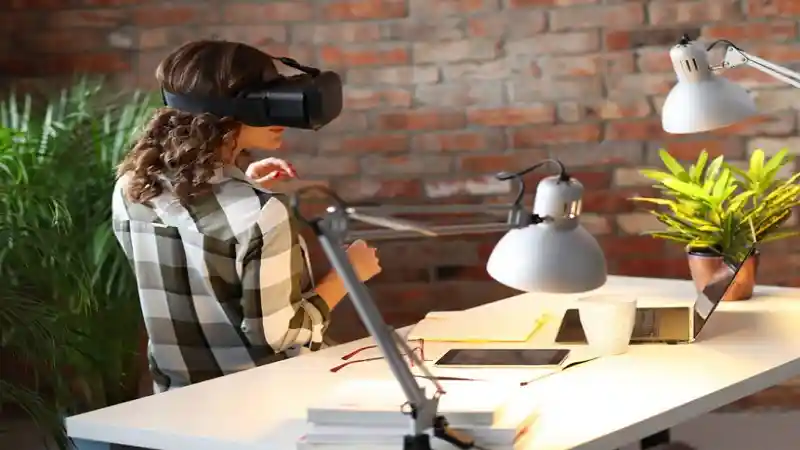The rise of artificial intelligence (AI) has sparked significant innovations across various industries, with one of the most exciting advancements being AI-powered image generation tools. These AI image generators are transforming the way creators, designers, marketers, and businesses approach visual content production, offering both speed and efficiency that were once unimaginable.
What is an AI Image Generator?
An AI image generator is a type of machine learning model that uses complex algorithms to create realistic images based on textual descriptions, existing visuals, or other forms of input data. These systems can generate original images from scratch or modify existing ones in creative ways, making them incredibly valuable tools for anyone in need of visuals, but lacking the resources for traditional design methods. Examples of AI image generators include DALL·E, MidJourney, and Stable Diffusion, which have already made waves in both the art world and practical industries.
Transforming Design and Creative Processes
The digital design process traditionally requires skilled artists and designers to spend significant time creating high-quality images, whether for websites, advertisements, or social media. AI image generators, however, can produce stunning visuals in seconds, allowing designers to streamline their workflows. By simply inputting a text prompt or providing a base image, users can receive multiple iterations of their requested design.
For example, a marketing team could enter a prompt like “a futuristic city at sunset with flying cars” into an AI image generator, and within moments, the system can produce a range of high-quality images that align with the vision. This saves valuable time while providing fresh perspectives and unique results that may not have been easily achievable through manual design processes.
Enhancing Creativity and Innovation
AI tools like these offer a unique advantage in the creative space by serving as a catalyst for innovation. Artists can experiment with new ideas and concepts quickly, allowing them to explore creative boundaries that may have once been limited by time or technical skills. For photographers and illustrators, AI image generators can be used to create reference images, provide inspiration, or even serve as a starting point for further artistic development.
Additionally, these generators help bridge the gap for individuals who may not have a strong background in design but still wish to produce professional-grade visuals. A startup without a dedicated design team can use an AI image generator to create everything from logos to promotional images, effectively leveling the playing field for small businesses and entrepreneurs.
Impact on Marketing and Social Media
Marketing has always been a visually-driven industry, with companies vying for consumer attention through eye-catching ads and branded content. AI image generators are giving marketers the ability to create custom visuals tailored to specific campaigns without the need for expensive photography sessions or stock imagery. Marketers can generate images that align perfectly with their brand message, experiment with different variations of an ad, and even personalize content for individual consumers.
In the realm of social media, businesses can rapidly produce fresh and engaging content to meet the ever-changing demands of platforms like Instagram, TikTok, and Facebook. The ability to instantly generate visual content allows companies to stay relevant and maintain a consistent presence online. This, in turn, enhances audience engagement, which is essential in today’s competitive digital landscape.
Ethical Considerations and Challenges
While AI image generators offer incredible advantages, their rapid adoption also raises concerns around the ethical implications. The technology is capable of creating hyper-realistic images that blur the lines between what is real and what is computer-generated, making it difficult to differentiate between original and fabricated content. This poses risks for misinformation, deepfakes, and intellectual property issues.
Furthermore, AI-generated content may reduce the demand for human designers, leading to concerns over job displacement in creative industries. It’s crucial that developers and users of AI image generation tools maintain awareness of these ethical challenges and approach the technology responsibly.
The Road Ahead for AI Image Generators
As AI image generators continue to evolve, we can expect them to become even more sophisticated and versatile. Future iterations of these tools may feature enhanced personalization options, greater control over generated content, and integration with other AI systems like text-to-speech or video generation tools. For example, we may see the development of AI models that can not only create static images but also produce animations, allowing creators to generate multimedia content from a single prompt.
Moreover, as AI image generation becomes more integrated into industries like gaming, fashion, and entertainment, new creative possibilities will emerge. The potential for personalized, on-demand content creation is limitless, with opportunities for artists, designers, and businesses to explore innovative ways of engaging their audiences.
Conclusion
AI image generators are ushering in a new era of content creation, making it easier and faster than ever to produce high-quality visuals. Whether you’re a designer looking to streamline your workflow, a marketer aiming to stay ahead of trends, or a business owner seeking to create professional content on a budget, these tools have the potential to transform your approach to visual design. However, it’s important to consider the ethical implications and use AI responsibly to ensure that these technologies benefit creators, consumers, and industries alike. The future of digital content creation is bright, and AI image generators are at the forefront of this revolution.


